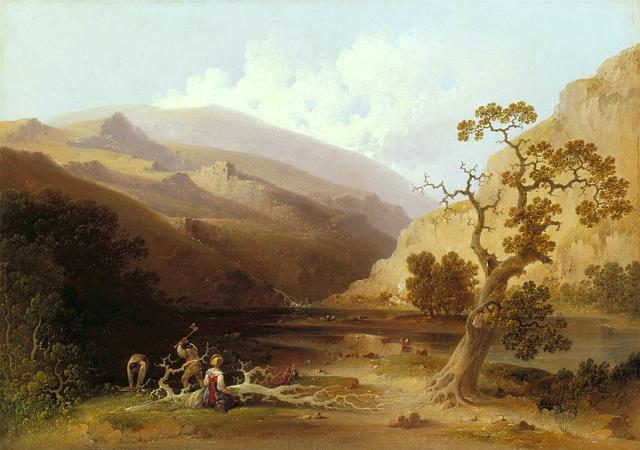Indiana State Museum. The Indiana State Museum is a museum located within White River State Park in Indianapolis, Indiana, United States. The museum houses exhibits on the science, art, culture, and history of Indiana from prehistoric times up to the present day. The museum is also the site of the state's largest IMAX screen. The original collection of the Indiana State Museum was started in 1862, during the Civil War, when State Librarian R. Deloss Brown began collecting minerals and other curiosities that he kept in a cabinet. In 1869, the Indiana General Assembly enacted a law which provided for the collection and preservation of a Geological and Mineralogical Cabinet of the Natural History of this State. A state geologist was assigned the task of labeling and organizing the collection, becoming the first employee of what would eventually become the Indiana State Museum. The natural history collection quickly developed beyond the legislature's original intent when hundreds of cultural items, many relating to the recent Civil War, were added. Soon the collection was a museum of sorts, with a hodge-podge of curios and specimens. The museum's collection was displayed in a spacious room on the third floor of the State Capitol building in 1888, but it did not remain there for long. It was frequently moved from room to room until 1919, when the collection was sent to a most inhospitable place, the basement of the Statehouse. It would languish in this location for almost 45 years, completely closing once in the late 1920s and again in the early 1960s. During the administration of Governor Ralph F. Gates, steps were taken to establish a new and modern state museum. Staff members who knew how to care for artifacts and operate a museum were hired. Possible sites for a new facility were studied and designs created. Philanthropist Eli Lilly, excited by the prospect of a professional-quality museum of Indiana heritage, donated the ground on the northwest corner of Ohio and Senate streets to the state. Unfortunately, the plans fell through, probably due to the $3.5 million price tag. Later, the administration of Governor Harold W. Handley and the legislature authorized a commission to examine the state museum. The commission recommended the construction of a building on the site originally proposed by the Gates administration. The commission reported that its members had been forced to the reluctant conclusion that Indiana has the poorest and most inadequate state museum in the United States. In 1962 Governor Matthew E. Welsh approved the resumption of the planning for a new state museum, but with a very different direction. The Indianapolis City Hall at 202 N. Alabama St. had become available in 1961 due to city government offices moving to the new Indianapolis City-County Building. The state and the city worked out an agreement for the museum to use the old building. The structure underwent extensive renovations to prepare it for life as a museum, at a cost of about $830,000. In 1967, the Indiana State Museum opened its doors in its first real home. It had four floors and a basement in which to develop exhibits, store and preserve collections, and provide office space for staff. In 1969, the Indiana State Museum Society was established to provide a private, fund-raising support organization. Also in 1969, the Indiana State Museum Volunteer Organization was established to assist the small museum staff. By 1976, the museum had received accreditation from the American Association of Museums. As years passed and the collection grew, the old City Hall became too small to meet the needs of the institution. Proposals were made in the late 1970s and mid-1980s for a variety of additions to the facility. Some involved purchasing nearby buildings, and others involved creating brand-new facilities that would connect to the old City Hall building. The museum's board voted to move to White River State Park in 1984. However, it was not until the late 1990s that the Indiana General Assembly appropriated funds that led to the August 1999 groundbreaking of the current Indiana State Museum. The Indiana State Museum closed its doors in the old City Hall on Dec. 31, 2001, in order to move to its new home at 650 W. Washington Street, opening there on May 22, 2002. The new building on the Indiana Central Canal in White River State Park cost about $105 million. With more than 40,000 square feet of exhibit space, and more than 500,000 artifacts in collections, the museum covers the history of the natural world, Native Americans, cultural history, and the future of Indiana.
more...



